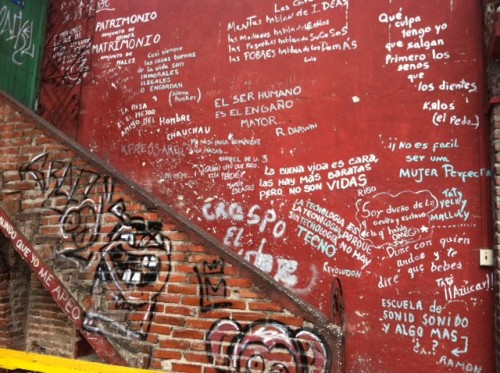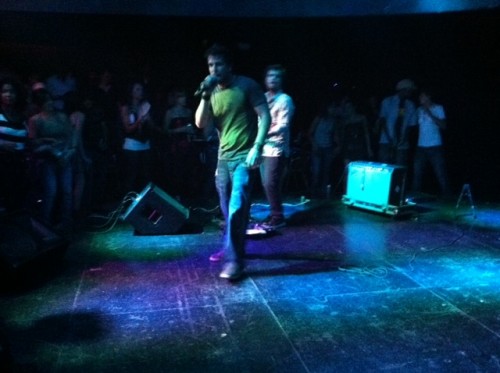A New Cuba Imagined through the Eyes of a Younger Generation
April 2, 2012 by chdent
Believe it or not, there is a cultural transformation taking place in the hearts and minds of the Cuban people and it’s being spearheaded by the younger generation. Cuba still has a long way to go, as do Americans, in creating a country that is more sensitive to issues of race, class, and gender- but there is a hopeful presence that can be felt in Cuba either walking down the Malecon or on Obispo street that represents the Cubans in the mist of change. In my opinion, it is only a matter of time before it’s completely out with the old and in with the new. A country that prides itself on the excellence of its performing arts and completely understands the importance of expression through artistic means of representation, cannot continue to invalidate the fluidity of gender and the diversity of its people. It’s contradictory to the essence of art and the nature of what Cuba has decided to fully integrate into its ideals and structure. However, there is hope, and it’s to no surprise that the artists of Cuba’s younger generation have located the contradictions and are working towards a more open and tolerant Cuban identity. The Cultural center, El Menjunje, in Santa Clara that our group visited while in the area is a perfect example of the strides that young people are taking to make their country a safer space for diversity. The center started the beginning of the gay movement on the island in 1984, and since then El Menjunje has remained a space where the Queer are strongly represented and can be appreciated for the artistic contributions that they wish to share with the rest of the world. One of the founders of the center, whose name shamefully escapes me, shared with us, ” It was not easy, but Menjunje has managed to do it. It is not a gay place, but a place where everyone is present and respected.” El Menjunje, a center where mostly young artists come to train in their specific craft and be heard, is arduously working to create a more tolerant city by integrating more young people into the cultural life. Menjunje welcomes rappers, transvestites, and rock bands-groups that were once considered to be counterrevolutionary and who still face struggles today- with open arms. Generally, the artists don’t make a lot of money at the center, but they continue to study and perform knowing that the work that they are doing has much bigger rewards for the future.
Another experience that informed my thinking about an undergoing cultural transformation in Cuba was the experience that I had one night at a jazz club in the city of Havana. I attended the jazz club with some friends on my last night in Cuba and having been to various bars and restaurants throughout the city, there was nothing about this particular venue that struck me as being different. As we pulled up to the club, there were many college age students like us waiting to be let in. This scene immediately grabbed my attention, not because I’d never seen young people in Cuba before, but because I had never seen so many people my age at a specific club or an event like this. The salsa club down Obispo and La Casa de Musica a couple blocks away from our hotel where a lot of Cubans tend to frequent, and that a couple of us visited in our first few nights in Havana were filled mainly with much older Cubans and tourists. I immediately felt a connection to the kids who were standing outside of the jazz club with me; they could easily have been some friends that I hang out with at Vassar on a Friday or Saturday night. At first glance, I thought that it was the way that they dressed and carried themselves that brought on this connection. For the first time since I’d been in Cuba, I saw people wearing converse sneakers, ripped jeans, and other aesthetics of the Hipster clothing fad that has taken much of the developed world by storm. However, when I walked into the club, I realized that clothing wasn’t the only thing that we had in common. I could very well have been at a Vassar Villard room party rocking out to Top 40’s or a funk band at “Jazz Night” in the Mug. All of the music was original Cuban music, performed by an awesome live band called Deja Vu, but the style and feel of the music was definitely something that I’d experienced before and liked. Upon my visit, I also found out that the club was very diverse in terms of sexuality; homosexuals frequented the club and are treated no differently while they are there expressing themselves with no reason or need to hide. One of our tour guides who had originally invited us to the club, brought along her gay friend to hang out with us and talk to some of us about gay spaces in Cuba. This jazz club is apart of the inkling of change that is taking place in Cuba right now, and I’m so happy that on my first visit I got to see what that looks like.
Leave a Reply
You must be logged in to post a comment.


